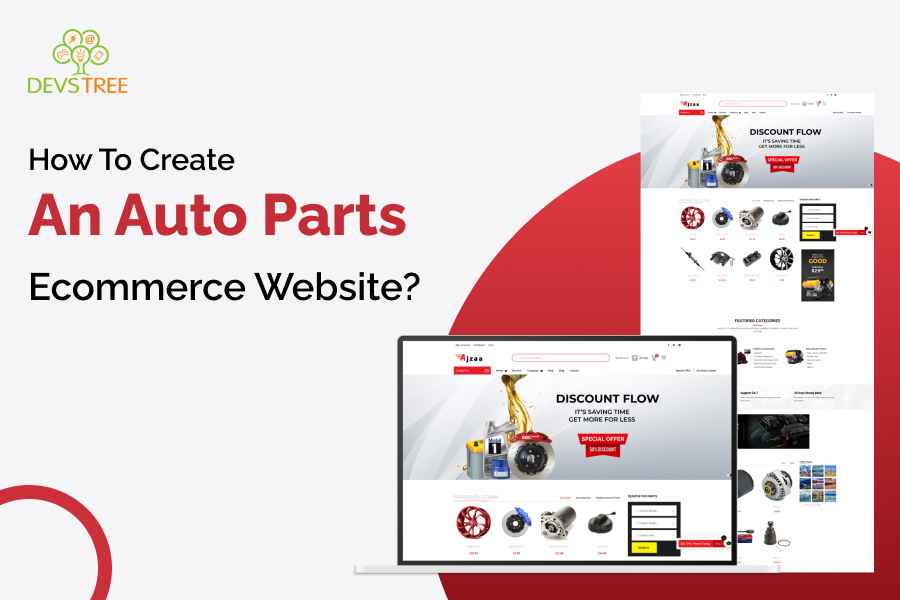The development of online businesses has changed how individuals do shopping, and the auto parts zone is the same. E-commerce sales of auto parts have increased. More and more businesses are trying to develop an online presence to meet the new growing demand.
However, making an auto parts e-commerce website development might be much work. There are various aspects to consider, from developing an intuitive user interface to developing complex inventory management systems.
This blog will provide a complete guide on how an ecommerce website development company develops an auto parts e-commerce website—from the many types of auto parts websites to the important characteristics of an auto parts e-commerce website.
How to Create an Online Auto Parts Store
Web developers need to know this to create a business website for customers searching for particular auto parts.
1. Establish Your Business Purpose and Target Audience:
You need to know what your target audience wants before building your auto parts e-commerce website. Consider variables such as income level, location, age, and gender. Find out what qualities people look for in an online merchant and which car parts they are most likely to purchase. After you have a clear understanding of your target market, define your business goals. These could include metrics for sales targets, profit margins, and customer satisfaction.
2. Select a Platform for Online Shopping:
Select a content-creating retailer from the shopping responsibility plan. These web-based business paltforms incorporate Shopify, WooCommerce, Magento, BigCommerce, and custom design, which are probably the most generally operated variants. Other important considerations are scalability, simplicity of customization, and user-friendliness.
3. Decide on a Hosting Company and Domain Name:
Select a domain name that is not difficult to recall, appropriate to your organization, and available. A domain name can be bought from a register like GoDaddy. Next, choose a hosting provider that can provide robust security measures, fast loading speeds, and continuous uptime. Some well-known hosts are HostGator, SiteGround, and Bluehost.
4. Design the Website:
Use an automobile parts website development company to create a user-friendly web layout design. The design ought to fulfill the requests of the target group and mirror the picture of your organization. Make the design as responsive as conceivable across all platforms, guaranteeing that the site works and offers a good survey experience no matter what the screen size of the gadget (laptop, PC, cell phone, tablet).
5. Create your catalog of products:
Hire web developers to develop an extensive product portfolio. This is essential for internet-based car parts sales. For every product, include thorough descriptions, excellent photos, and pertinent information. To make it more straightforward for clients to find what they’re searching for, classify your items by given kind, brand, and other applicable characteristics. Take into account providing product kits or bundles to boost revenue and raise client pleasure.
6. Key Elements of Automobile E-Commerce Websites:
A successful auto e-commerce website needs to have a few essential components:
- Entire Product Catalog:
To assist clients in finding what they need fast, import precise car parts data and provide simple search and filter choices based on vehicle specifics (year, make, and model).
- Smooth Check-Out:
Several payment methods should be integrated with safe payment gateways to ensure a quick and easy checkout process.
- Integration of Inventory Management:
Link your website to an inventory management system to expedite order fulfillment, shipping, and stock control.
- Customized User Interface:
Utilize consumer information to tailor product suggestions and establish user profiles for wish lists, order histories, and more convenient future purchases.
- Client Ratings and Reviews:
Promote user reviews to increase brand recognition and foster trust, which will instill greater confidence in your products among prospective customers.
7. Include Tracking and Analytics Tools:
Use analytics and checking tools like Facebook Pixel and Google Examination to make the most out of your showcasing drives and track the progress of your site. To find areas that could use work, keep a watch on indicators like website traffic, conversion rates, and consumer behavior. Make use of this information to develop marketing strategies that are aimed at your desired clientele.
8. Launch Your Website!
Before launching your website, give it a complete test. Confirm that all buttons and links work accurately and that the checkout technique is clear and error-free. After your site is ready to go, you ought to use digital marketing strategies like social media, email advertising, and SEO website improvement to advance it. To help the viability of your site, make any important performance changes.
Bottom Line:
Businesses can make sure they have a strong online presence and can meet the diverse needs of automotive enthusiasts worldwide by using an appropriate e-commerce platform, paying attention to major developmental parameters, and having a thorough understanding of the fleet management software development market. Reach out to Devstree right now if you’re interested in developing your automobile website. Hire web app development company like us.
